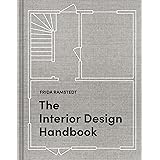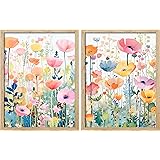Crafting High-End & Vintage-Inspired Home Decor on a Budget: Your DIY Guide
Achieving a high-end or vintage-inspired aesthetic in home decor often involves significant financial investment. Many desirable pieces carry hefty price tags. This presents a challenge for individuals seeking to elevate their living spaces without overspending. Fortunately, creative DIY solutions offer an effective way to replicate luxurious looks. Budget-friendly materials are utilized, transforming ordinary items into bespoke decor. The video above showcases several ingenious projects. These DIY ideas deliver sophisticated results without the premium cost.
Elevating Wicker Jars with a High-End Finish
Wicker jars are often desired for their natural texture. However, high-end versions can be prohibitively expensive. For instance, specific wicker jars from McGee & Co. are known to retail for $106 for a small size. A larger version is typically priced at $148. Such costs make them inaccessible for many decor enthusiasts.
A simple DIY approach offers a remarkable alternative. Two plain wicker jars were purchased for this transformation. These items were then spray-painted using Rust-Oleum in the color Nutmeg. This particular shade is valued for its ability to mimic expensive brown wicker. Two coats of spray paint were applied, ensuring thorough coverage. The wicker material readily absorbed the paint. This resulted in a natural, chip-resistant finish. The transformed jars were placed in a kitchen. They provided a refined, natural element to the counter space. They also filled a corner effectively, adding varying heights.
The Art of Glazed Crocks: A Vintage French Aesthetic
Vintage French crocks are highly sought after. Their unique glazed appearance and antique charm often come with a substantial price tag. Replicating this aged look is considered difficult. However, a specific technique can achieve the desired effect. An existing utensil crock was chosen for this DIY project. Its color was initially satisfactory but a brown shade was desired.
The crock was spray-painted with Rust-Oleum in Espresso. Two coats were carefully applied for full coverage. After drying, a distinctive drip effect was created. This technique involves light overspraying in certain areas. It mimics the authentic paint drips seen on many antique crocks. A crucial step involved using a spray glaze. This product transformed the appearance. It gave the crock a genuinely glazed, high-value finish. The result was a stunning, vintage-inspired piece. It now appears as a true antique, typically valued at hundreds of dollars.
Reimagining the Antique French Stool: A Rustic Makeover
Antique French stools are rare and coveted items. Their unique shapes and varying leg designs contribute to their high value. Such stools are often difficult to find. They typically retail for several hundred dollars. An affordable Amazon stool was selected as a base for this transformation. It featured a light oak finish, providing a clean starting point.
The stool was first sanded to create a rustic texture. An 80-grit sandpaper was used to introduce deep scratches and scuffs. This aggressive sanding was followed by a fine-grit paper. The stool’s surface was smoothed out. This ensured safety, especially for use in a powder room for children. Initial attempts to stain the stool, specifically with Dark Walnut, were unsuccessful. The wood did not properly absorb the stain. A different method was adopted. The same Rust-Oleum Espresso spray paint was applied. It was immediately wiped off with a paper towel. This technique achieved a dark, rustic appearance. The finished stool closely resembled its antique counterparts. It provided a contrasting, darker aesthetic to an existing antique stool. This stool is recommended for those seeking a similar finish.
The Discreet Gallery Wall: Hiding Light Switches
Light switches can often disrupt the aesthetic of a carefully curated gallery wall. Their presence breaks the visual flow. This issue is commonly encountered in home decor. A simple, elegant solution involves concealing them behind a framed piece of art. This project creates a seamless and sophisticated look. It transforms a functional necessity into an integrated design element.
Specific materials are required for this DIY. Narrow utility hinges were sourced from Home Depot. A lightweight frame, large enough to cover the switch, was selected. The frame’s thickness was crucial; it needed to be thicker than the screw length. This prevents screws from piercing through. The frame was attached to the hinges first. This simplified the wall installation process. The hinges were positioned on the inside edge. This ensures they are not visible when the frame is closed. While not drilled into studs, drywall anchors are recommended for long-term stability. This allows for a gallery wall to be created. The switch no longer “ruins the moment.” A completely flush fit is possible if the frame has a hollow interior, accommodating the switch plate. Frames from Target’s Hearth & Hand collection and Petal Lane Home are often utilized for such displays. Seasonal changes of artwork are easily accommodated.











